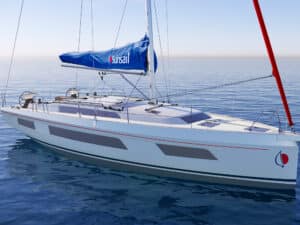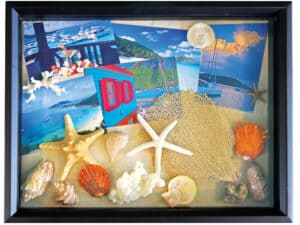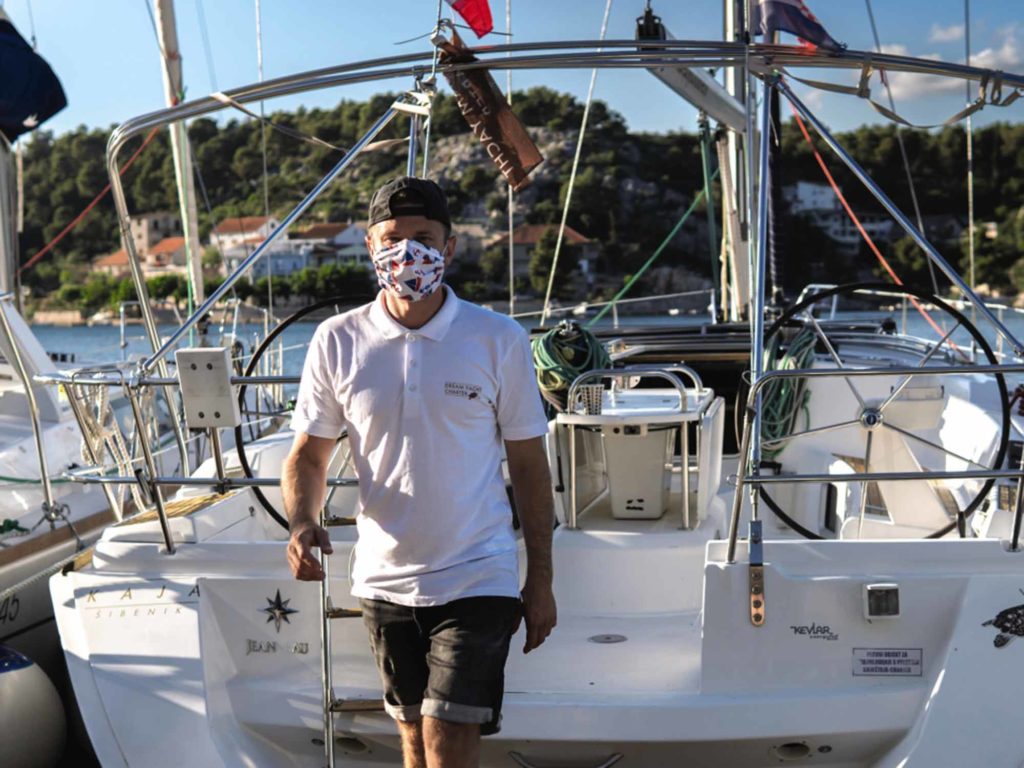
If you’ve gone sailing off on charter vacation before, you’re familiar with the usual drill upon arrival at a dream destination. Guests typically land at the local airport and travel to the charter base via a charter-company-owned shuttle or a taxi for an in-person check-in. Celebratory libations are common, followed by a detailed chart briefing and an extensive boat walk-through with a base captain. Then, skipper and crew often spend their first night aboard at the charter base preparing for a morning departure.
But, like so much else in 2020, these rituals have changed. In the midst of a still-unfurling pandemic, charter companies large and small are (more or less) open for business and have taken many preemptive steps to ensure that visitors are as safe aboard their vacation vessels as they are at home.
For starters, Ian Pedersen, senior marketing manager for the Moorings and Sunsail, and Mike Huston, a partner at San Juan Sailing in Bellingham, Washington, both say that their companies have moved many of the in-person check-in procedures online, allowing guests to complete steps such as safety briefings and vessel walk-throughs prior to their arrival at the base.
“We send our clients a link to a video the week before their charter, and we have a quiz at the end to prove that they watched it,” Huston says.
Pedersen says that the Moorings and Sunsail have taken similar steps to move many of the briefing procedures online. For example, the company has created video walk-throughs of their fleet, which are posted online and sent to charterers prior to their arrival. After watching the video, Pedersen says that customers engage in a live Q&A session with someone at their destination base so that they can ask specific questions about their chartered sailboats.
Likewise, Cindy Kalow, co-owner of Superior Charters in Bayfield, Wisconsin, says her company has moved payments, documents and signatures online. “People can come through the whole process and not see us in the office,” she adds.
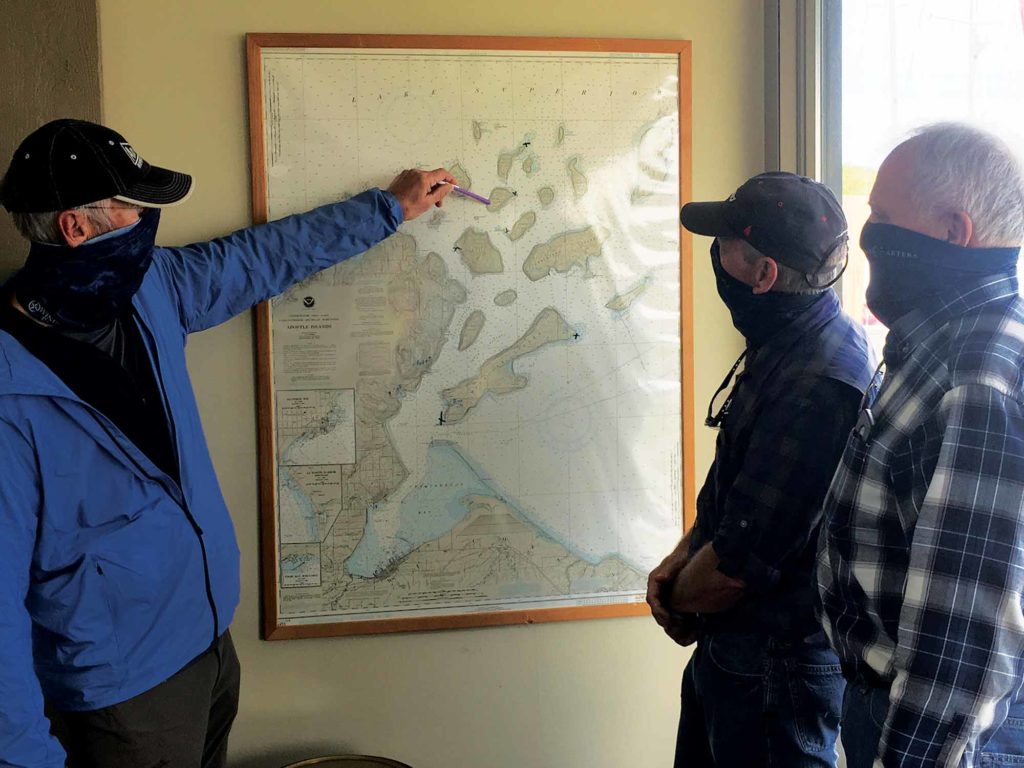
Once guests are on the ground, Pedersen says that the Moorings and Sunsail are running extra airport shuttles and limiting the capacity of the vans to ensure more distancing. “We won’t cram visitors into vans,” he notes.
Distancing was a recurring theme across all the companies with whom we spoke. At Superior Charters, for example, instead of having charter guests crowd into the front office, they are instead directed to a lobby where they will find an envelope containing the name of their boat, a list of its inventory, codes to shoreside heads, and information on when their captain will meet them for their dockside check-out. Should a captain need to step aboard during this check-out, he or she is always masked.
While Superior Charters doesn’t supply linens or organize provisions, other companies, such as the Moorings and Sunsail, commonly perform these services. Pedersen says that, while charterers are welcome to go grocery shopping themselves, those who opt for provisioning services will step aboard to find their supplies disinfected and packed into lockers or the refrigerator in sealed and dated containers.
Preventative steps being taken in response to the pandemic include fogging, professional cleaners, widespread use of disinfectants, sealed linens and packaged provisions.
Pedersen adds that chart briefings, which once involved 30 charterers at once, have been reduced to just 10 to 15 socially distanced sailors.
Dan Lockyer, vice president of global tourism for Dream Yacht Charter, says that the company is taking steps to ensure that staff members are healthy. “Our base staff have their temperatures taken before starting work, wear masks when in contact with customers, observe social distancing, and regularly disinfect their hands,” he notes.
“Only one guest [or] the skipper is allowed in the office area, and only the skipper will take part in the technical briefing and be on the dock for check-in,” Lockyer says. “Check-in and check-out procedures will be conducted outside where possible. Guests will be asked to wear masks and sanitize their hands before any face-to-face interaction.”
While airborne transmission is COVID-19′s most common vector, all companies we interviewed are taking steps to ensure that charter boats are virus-free before guests step aboard. “We’ve eliminated back-to-back trips, and we allow a full day between trips,” Kalow notes. This extra time is used for stem-to-stern cleanings, which are performed by professional cleaners wearing respirators, and involve bombs that release a commercial-grade disinfectant spray that’s used in hospitals.
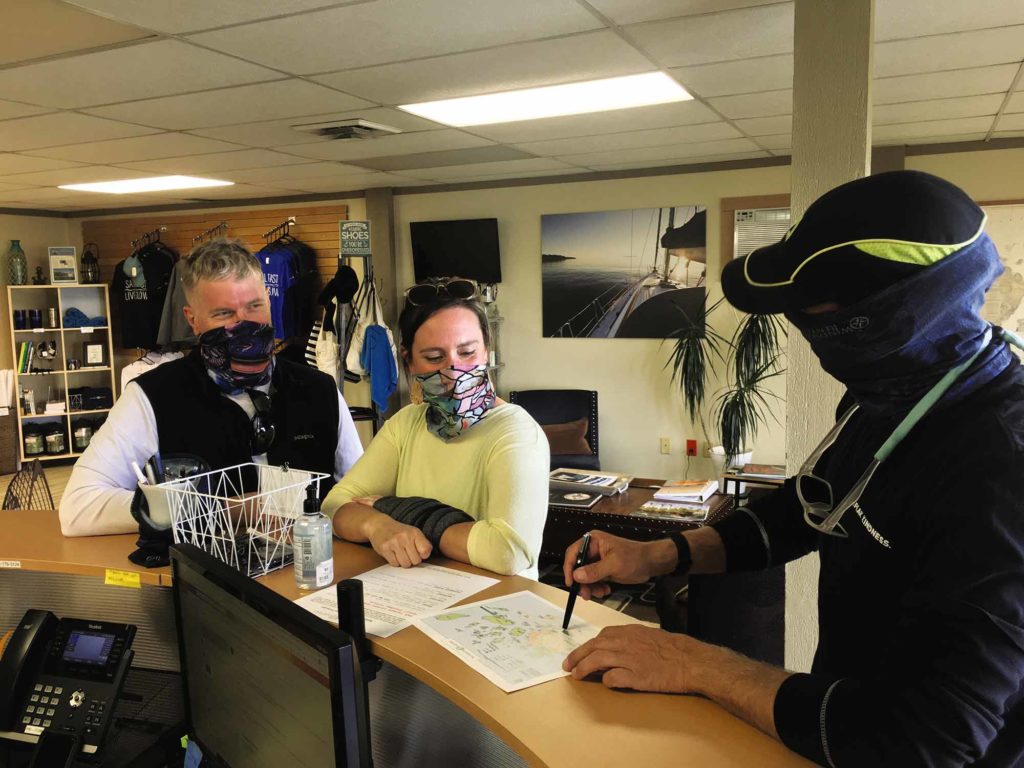
Pedersen echoes the themes of longer turnaround times and disinfectant bombs. “We’ve built in a 24-hour window to clean boats,” he says. “When boats come back to the base, cleaners in hazmat suits fog and disinfect each boat.” Once this virus-killing fog has lifted, cleaning teams disinfect the boat before performing a final fogging treatment. Linen service is still included, but Pedersen says guests can rest assured that all linens have been thoroughly washed, in some cases multiple times.
Lockyer also points to the importance of cleaning. “The fleet is rigorously disinfected with an ecologically friendly formula after each charter, including the interior and exterior,” he says. “Mattresses are sanitized, and the galley inventory set and bed linens are provided in sealed bags.”
At San Juan Sailing, silverware and crockery are similarly scrutinized. “All kitchen utensils, glasses, and silverware are put in a sink of water and germicide,” Huston says, adding that all high-contact surfaces are wiped down between trips.
While these extra steps require time and resources, 2020 was bountiful for the domestic charter trade. “We’re busy, really busy,” Huston says of this past summer’s business. Kalow reiterated this positive message. “We’ve done hundreds of trips—it was a great year,” she reports, adding that Superior Charters has also seen more than a twofold uptick in the number of people—especially younger families—registering for sailing and chartering lessons.
Pedersen, meanwhile, says that some governments have reached out to the Moorings and Sunsail to learn more about the steps that the company has taken to ensure their guests’ safety so that they can mandate similar procedures across their greater travel sectors.
So, while all travel in the pandemic age comes with some hurdles, sailors will find that charter companies are taking smart steps to ensure that their experience is as safe, virus-free and socially distanced as possible.
David Schmidt is CW’s electronics editor and occasionally reports on other aspects of sailing life.



